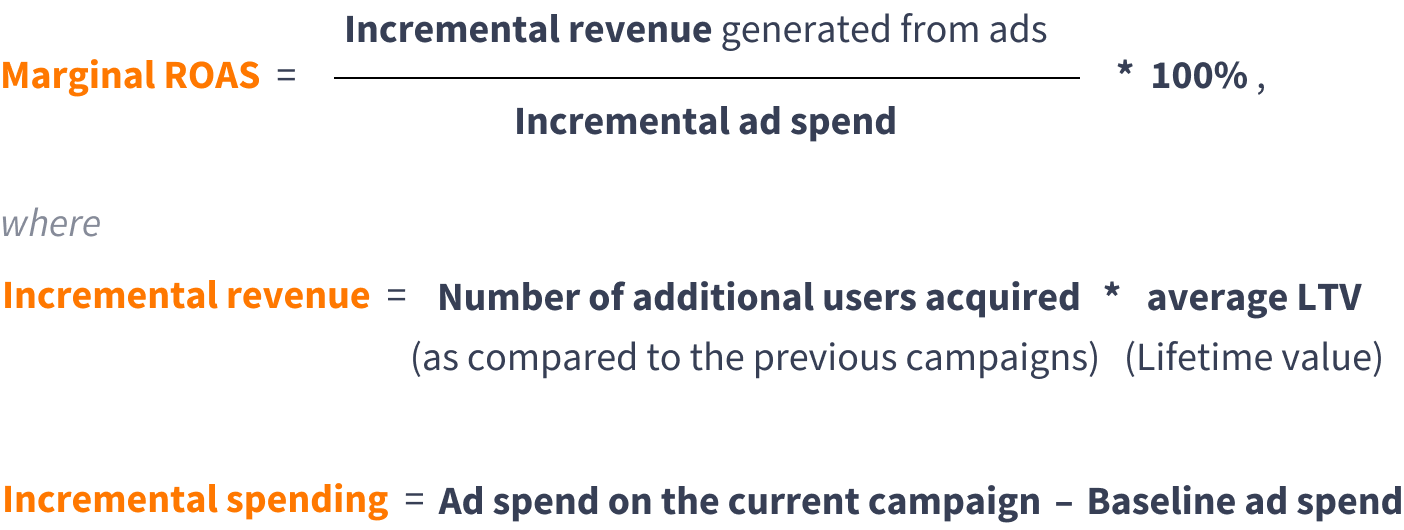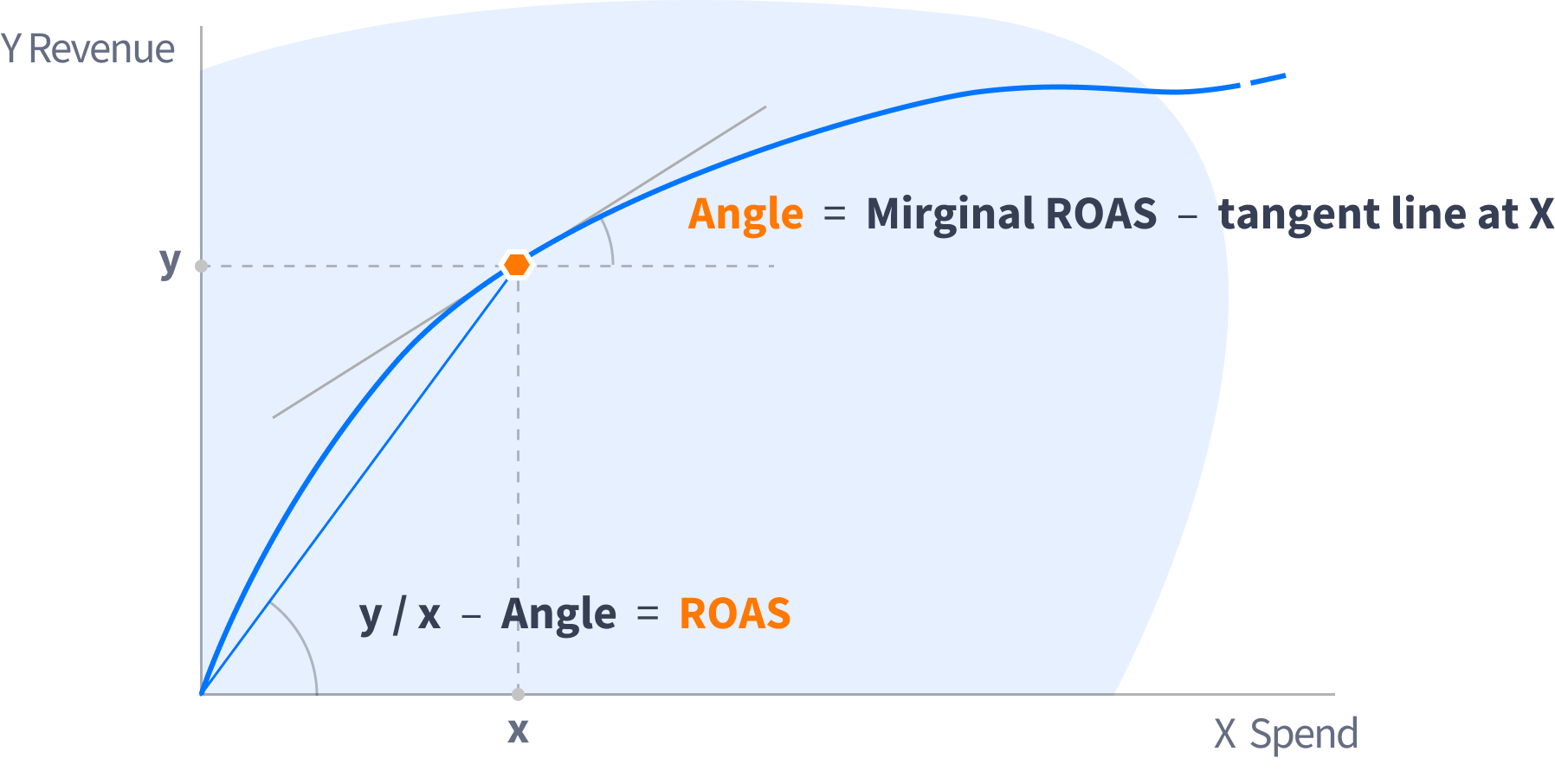To evaluate the efficiency of marketing efforts and ad campaigns, most marketers use ROAS (return on ad spend), which is calculated by dividing the revenue gained as the result of the campaign by the ad spend. However, very few of them take such thing as incrementality into account. But, according to the Pareto law, each additional dollar invested yields less revenue than the previous one.
Therefore, even though your ROAS may seem good enough, you actually might be already losing money on your campaigns. Incrementality shows the efficiency of specific marketing interventions by identifying how much value each new dollar adds to the conversion outcomes and revenue. This is why measuring incremental, or marginal ROAS is key to analyzing your acquisition campaigns and drawing conclusions.
Today, we’ll talk about how you can use marginal ROAS to optimize your acquisition efforts and spending.
How to calculate marginal ROAS?
Measuring incremental values rather than absolute ones helps you exclude irrelevant conversions or spending data from your calculations. Likewise, measuring marginal ROAS disregards organic conversions or conversions driven by other channels or previous campaigns and considers changes in spending.
The basic calculation formula is the following:

However, there’s another way to calculate marginal ROAS using historical statistical data. Here’s how:
- Create a data set comprising daily historical spending from your ad platform vs revenue from CRM attributed to that spending;
- Clean and normalize the data using special algorithms;
- Visualize it on a line chart aligned by ascending spending and calculate n in the function y = x^n.

With this multiplier on hand, you can now calculate marginal ROAS:
Marginal ROAS = ROAS * n
In case you have little data or few resources to make calculations, you can use a simple rule of thumb. In our experience, for most campaigns, n lies between ⅔ and ½.
For example, if your baseline ad spend is $1,000, from which you earn $5,000 (i.e. ROAS = 5), each additional dollar spent will have a marginal ROAS of 5/1.5 = 3.3. In other words, this gives you a more realistic view of how successful your campaigns are.
What are the implications?
…for CMOs, Directors of marketing science, CEOs, and other C-suite executives
Calculating marginal ROAS helps prevent excess ad spending. When setting minimal ROAS for marketing campaigns, it’s worth taking incrementality into account.
For example, if you set minimal ROAS based on the break-even point, you might be losing money on certain ads or campaigns – because your marginal ROAS will be on average 1.5 times less.
One of the issues you might face if you have a long sales cycle or deferred revenues is that you might have difficulties calculating ROAS and marginal ROAS in real time. In this case, using predictive revenue calculation models might be helpful. For example, at Tomi.ai, we have developed such models to predict future sales and customer LTVs.
…for marketing managers
Bid caps and cost caps are two popular options used in Facebook ad campaigns. One of the bid strategy options is the minimal ROAS which you can use to optimize the campaign by targeting users who are most likely to convert into paying customers.
Indicating marginal ROAS instead of minimal ROAS in the bid cap strategy might be helpful for ad spend optimization. So, if you have a minimal ROAS of 3, for example, it’s recommended to multiply it by 1.5 to get the optimal result.
However, when optimizing ads by keywords, minimal ROAS coincides with marginal ROAS (i.e. the minimal profit you get for spending x dollars). In this case, average ROAS is only needed when calculating overall channel performance.
Final thoughts
Incrementality is something to be taken seriously when measuring your marketing performance and planning further investment. If not taken into account, you might end up with inadequate estimates and excess ad spending. To help you save more money, we at Tomi.ai have developed a predictive model for optimizing ad campaigns that considers both incremental costs and real-time user behavior.




